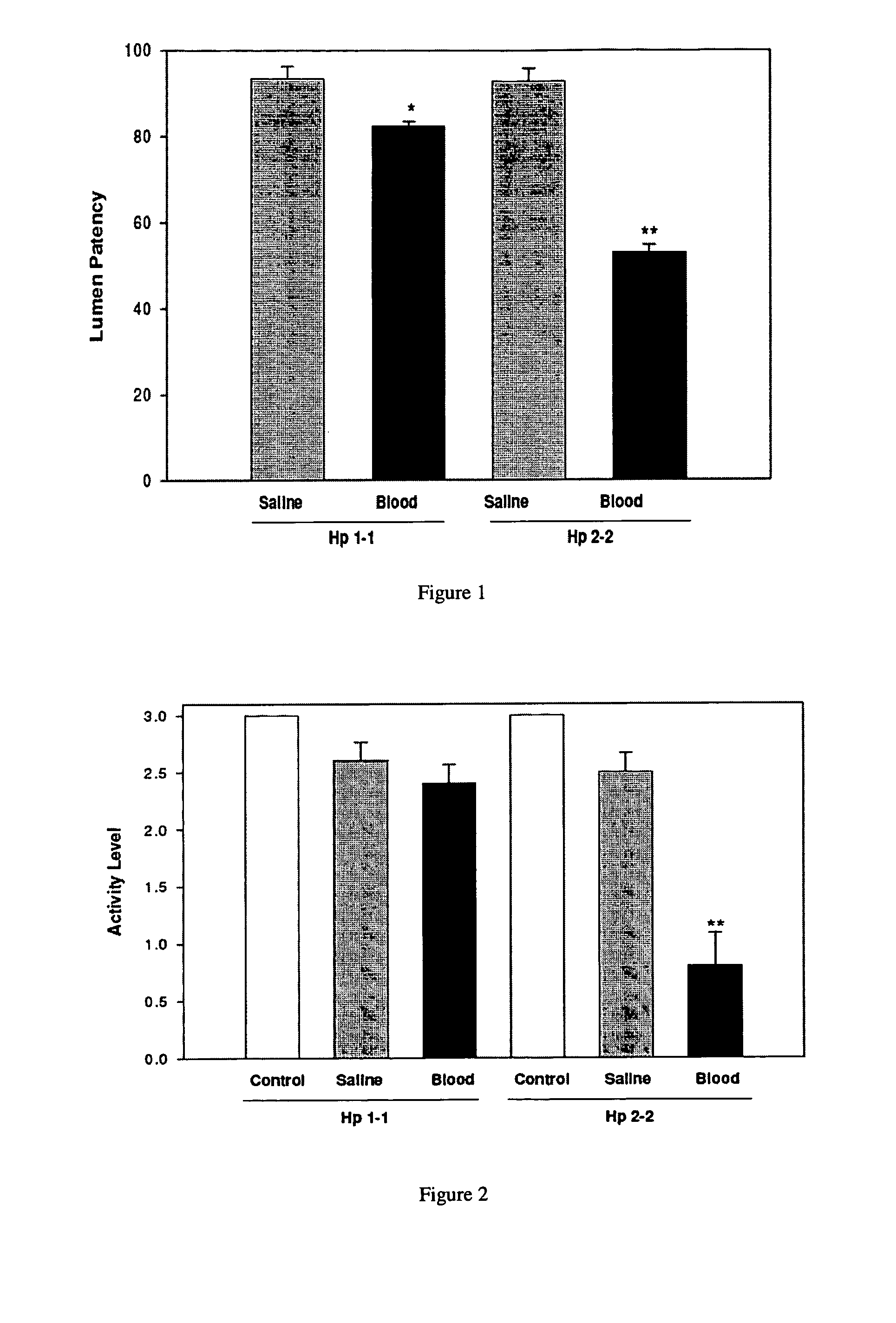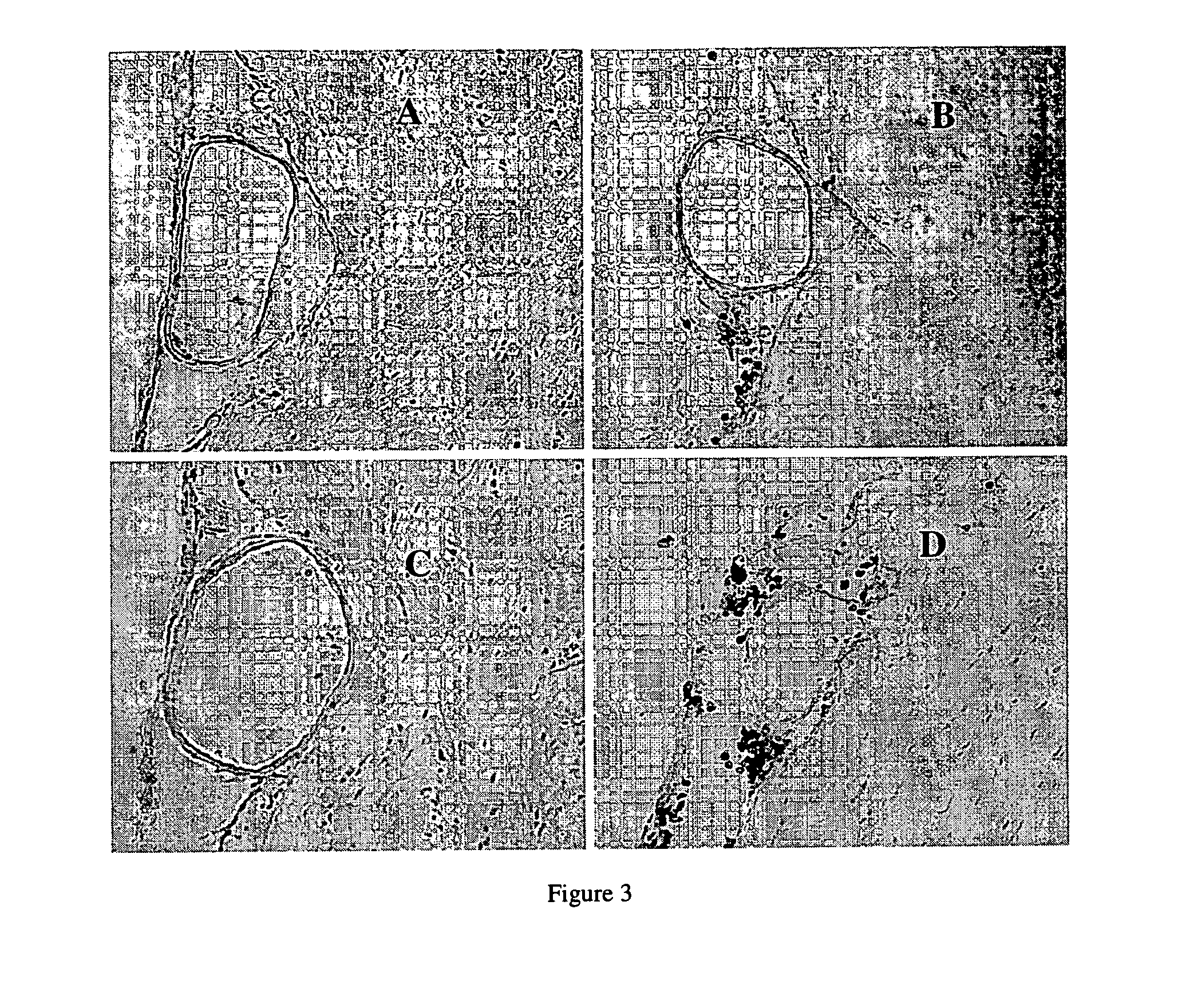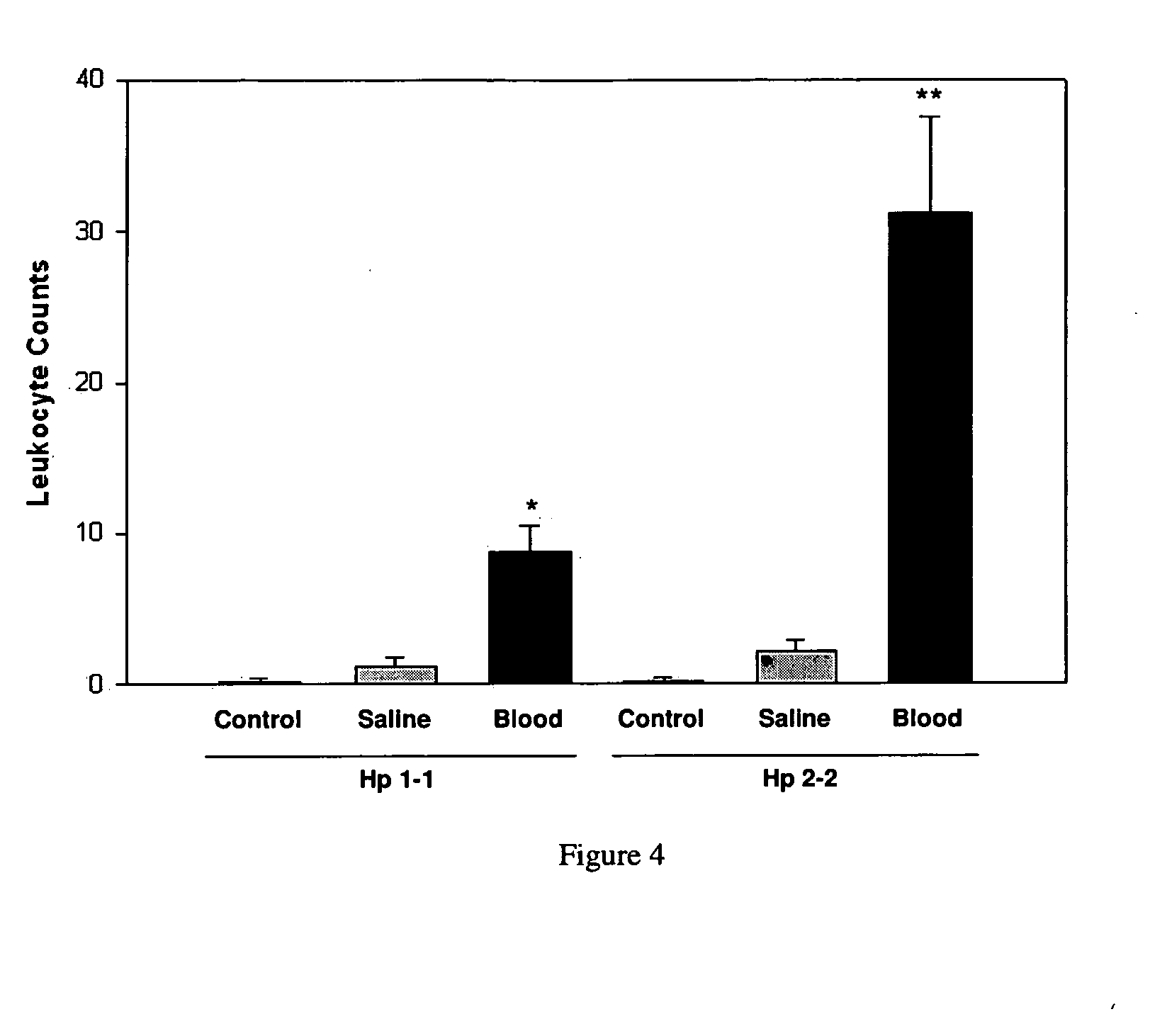Haptoglobin genotyping for prognosis and treatment of chronic vasospasm following subarachnoid hemorrhage (SAH)
a technology of haptoglobin and subarachnoid hemorrhage, which is applied in the field of haptoglobin genotyping for the prognosis and treatment of chronic vasospasm following subarachnoid hemorrhage (sah), can solve the problems of delayed ischemic neurological, permanent deficit, morbidity and mortality, etc., and achieve the effect of inhibiting or suppressing a vasospasm, reducing symptoms, and reducing symptoms
- Summary
- Abstract
- Description
- Claims
- Application Information
AI Technical Summary
Benefits of technology
Problems solved by technology
Method used
Image
Examples
example 1
Lumen Patency Following SAH in Hp 1-1 and HP 2-2 Mice
[0218]The percent lumen patency of the basilar artery was determined by dividing the mean vessel area of each animal by the mean area of the control group that did not undergo surgery. After SAH, the percent lumen patency (mean±SEM) was significantly reduced in blood-injected Hp 2-2 mice as compared to that of blood-injected Hp 1-1 mice (52.9±1.9% vs. 82.3±1.3%, p<0.001) (FIG. 1). Whereas the lumen patencies for Hp 1-1 control, saline, and blood-injected groups were 100±2.1%, 91.6±2.9%, and 82.3±1.3%, respectively, those of Hp 2-2 control, saline, and blood-injected groups were 100±3.8%, 92.8±3.0%, and 52.9±1.9%, respectively (FIG. 1). There were 10 animals per group.
example 2
Activity Level Following SAH in Hp 1-1 and Hp 2-2 Mice
[0219]Activity levels were assessed 24 hours following surgery, according to the three-point scale described in Table 1. After SAH, the activity level (mean±SEM) was significantly reduced in Hp 2-2 mice as compared to that of Hp 1-1 mice (0.8±0.3 vs. 2.4±0.2, p<0.001) (FIG. 2). Whereas the activity levels for Hp 1-1 control, saline, and blood-injected groups were 3.0±0, 2.6±0.2, and 2.4±0.2, respectively, those of Hp 2-2 control, saline, and blood-injected groups were 3.0±0, 2.5±0.2, and 0.8±0.3, respectively (FIG. 2). There were 10 animals per group.
example 3
Macrophage / Neutrophil Infiltration Following SAH in Hp 1-1 and Hp 2-2 Mice
[0220]Macrophage / neutrophil infiltration was determined by counting the number of macrophages / neutrophils in the subarachnoid space per HPF in basilar artery sections (FIG. 3). After SAH, the number of macrophages / neutrophils (mean±SEM) in the subarachnoid space per HPF was significantly higher in Hp 2-2 mice as compared to Hp 1-1 mice (31.2±6.3 vs. 8.8±1.7, p=0.009) (FIG. 4). Whereas the number of macrophages / neutrophils in the subarachnoid space for Hp1-1 control, saline, and blood-injected groups was 0.2±0.2, 1.2±0.6, and 8.8±1.7, respectively, those of Hp 2-2 control, saline, and blood-injected groups was 0.2±0.3, 2.2±0.7, and 31.2±6.3, respectively (FIG. 4). There were 5 animals per group.
PUM
| Property | Measurement | Unit |
|---|---|---|
| temperatures | aaaaa | aaaaa |
| pH | aaaaa | aaaaa |
| flow rate | aaaaa | aaaaa |
Abstract
Description
Claims
Application Information
 Login to View More
Login to View More - R&D
- Intellectual Property
- Life Sciences
- Materials
- Tech Scout
- Unparalleled Data Quality
- Higher Quality Content
- 60% Fewer Hallucinations
Browse by: Latest US Patents, China's latest patents, Technical Efficacy Thesaurus, Application Domain, Technology Topic, Popular Technical Reports.
© 2025 PatSnap. All rights reserved.Legal|Privacy policy|Modern Slavery Act Transparency Statement|Sitemap|About US| Contact US: help@patsnap.com



